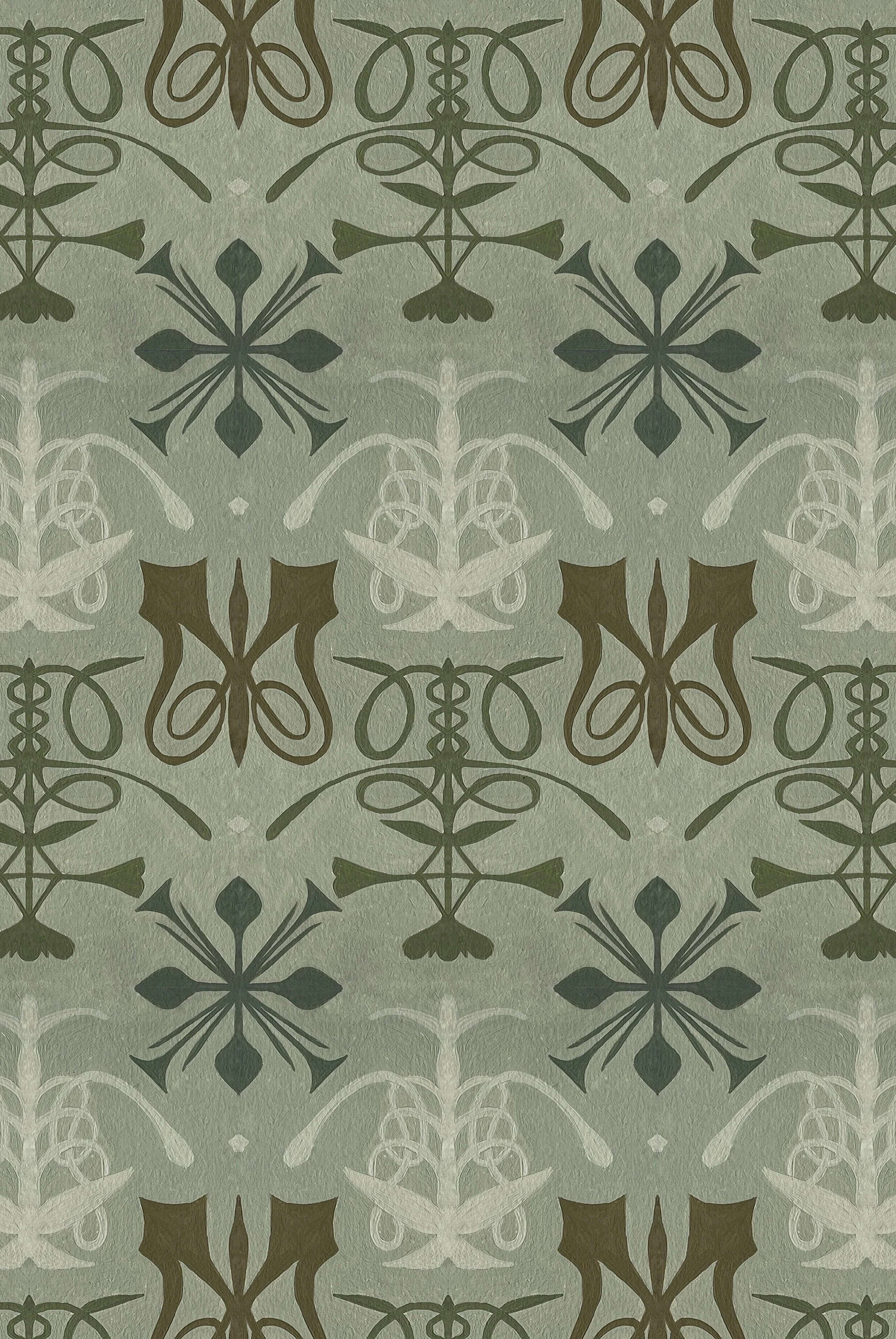iona
folktale pattern series
Iona. The remote island of West Scotland’s Hebrides archipelago with its rugged landscape steeped in history and myth. Today, it still serves as a place of significance for surviving Celtic traditions and early Christianity in Britain.
In the present day, the island and the abbey still stand as the home of a faith community that invites people from all backgrounds to engage with its history and significance. Interfaith pilgrimages to Iona have taken place for hundreds of years, including representatives visiting from Scotland’s Christian, Muslim, Jewish, Sikh, Hindu, Baha’i and Buddhist communities. While there, they engage in dialogue focused on issues such as environmental stewardship and equality, though you don’t have to be of any faith to appreciate its beauty and rich history in the Scottish landscape.
In 563 AD, Irish monk St. Columba arrived on Iona after fleeing Ireland over his part in a conflict involving a book of psalms and bloodshed. A repentance he had vowed to convert as many people to Christianity as had been lost in the battle and thus found himself and his twelve companions in Scotland with a new calling.
On the island, he founded a monastery which became a centre of a Celtic form of Christianity, one which emphasised the sacredness of Earth and the reflection of divinity in the natural world. A God-source that could be found in trees, plants, rocks, oceans, animals, and humans. This branch of faith focused on the idea that the divine is symbolised in the ordinary and blended Celtic paganism with early Christian traditions.
Later, these traditional beliefs fell into decline after the Synod of Whitby established the Roman doctrine across Northern England and parts of Scotland. This shift preached that the teachings of God could only be found through the divine authority of the Church. Yet, because of its isolated location from these Roman custodial strongholds, Iona became somewhat of a centre of resistance for Celtic Spirituality.
For this piece, I wanted to create a pattern that involved a range of distinctly separate symbols that worked in harmony with each other once the pattern repeated. Unlike my previous designs, these forms don’t overlap or distinctly connect, but quietly co-exist, similarly to Iona’s progressive community of pilgrims.
In a time of growing division along lines of belief and heritage, I wanted my art to convey the importance of creating harmony from difference — a message inspired by inclusive spaces like the island of Iona.
Inspiration for this pattern arose from memories of conversations with my Nana about her pilgrimages to Iona. She would tell me stories of the island’s lesser-known standing stones, which the Celts believed acted as a thin veil between worlds.
For the pattern forms, I adapted symbols of Celtic and ancient Christian tradition. While sketching the design, I noticed echoes of other religious symbolism through the curves and structure. The colours for this pattern was inspired by the shades of greenstones my Nana collected from Iona and showed me as a child, as well as the greenish-blue colour of the shorelines I’ve seen in photographs.




